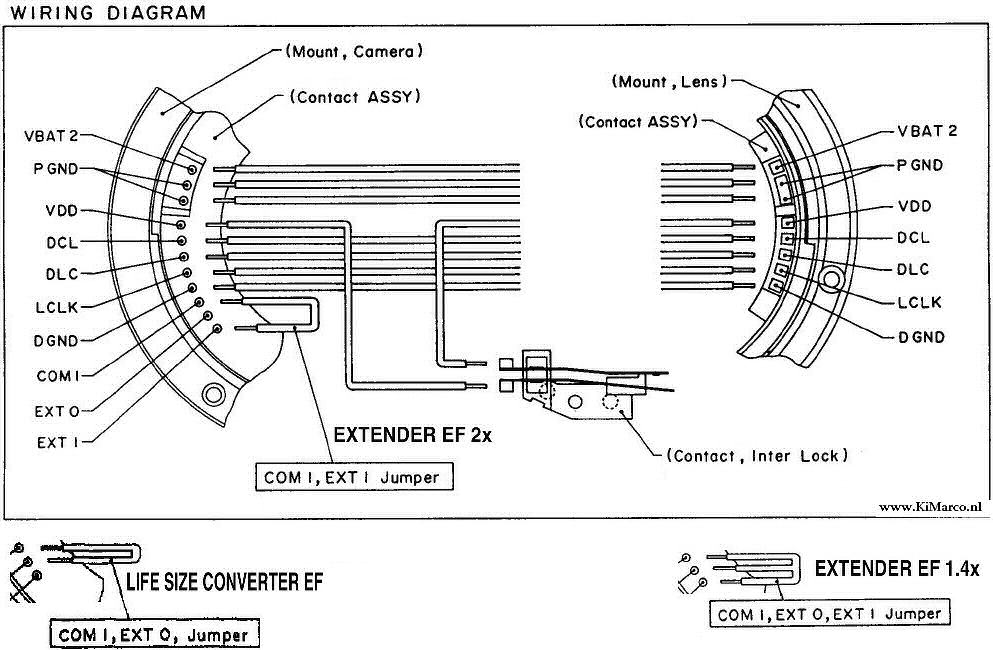Canon Extender Secrets - AF speed and aperture changes
I read and hear people asking questions on how and why the AF and f-stops
change on their lenses when using an extender.
Once an extender is used one loses 1 or 2 stops of light as the effective
aperture changes. Also the incoming image will be enlarged which causes an
exaggeration of the AF speed resulting in a loss of AF accuracy. In order to
achieve a good AF the AF motor speed is reduced by the lens when a extender is
attached. The larger the magnification the slower the motor will turn. AF will be
shut down on non-professional bodies when the maximum aperture is smaller than
f/5.6, on professional bodies this threshold is f/8. The software in the body
decides to permit AF or not based on the information it gets from the lens.
If one uses an EF1.4x extender or the life-size converter it will cost you 1
f-stop. An f/4 lens will become f/5.6. This corrected aperture will be
transmitted to the body by the lens back to the body via the extender, the lens itself detects
whether and which extender is attached. An EF2x extender costs you 2 f-stops an
f/4 lens therefore becomes f/8 and AF will be lost on a non-professional body.
In the repair manuals of the extenders I found that there are 3 pins that give a
signal to the lens concerning the type of extender. It can tell the lens whether
an EF1.4x, EF2x or life-size converter is being used.
As a result 1 f-stop is corrected when using an EF1.4x or life-size converter.
Of course this signalling will only work if the lens is compatible, besides the
physical restriction of the protruding lenselement also the needed electronic contacts may be missing.
Besides the f-stop correction also the AF motor speed is adapted by the lens electronics.
When using an EF2x extender the signal is translated to a 2 f-stop correction
and an even slower AF speed.
When stacking extenders, which is possible with the new EF2x II, the f-stop and
AF corrections are based solely on the type of the extender directly connected
to the lens as the extenders do not pass on their presence. As only 3 jumper
configurations can be defined there is no way of communicating such information
to the lens. Maybe Canon will upgrade their systems in the further, however, as
also the lenses may need an upgrade to cope with such information. Nevertheless as the metering is performed through the lens (TTL)
a wrong f value on your display will still yield a correct picture
De pin outs: COM1:EXT0:EXT1
1:1:1 1:0:1 en 1:0:0 en 1:1:0 The first pin is always on ...
1:0:0 no extender present/unused
1:1:1 an EF1.4x
1:0:1 an EF2x
1:1:0 a Life-size converter
To clear things up a little more here a technical picture showing the pinout configurations:

This page is part of www.kimarco.nl
>> BACK